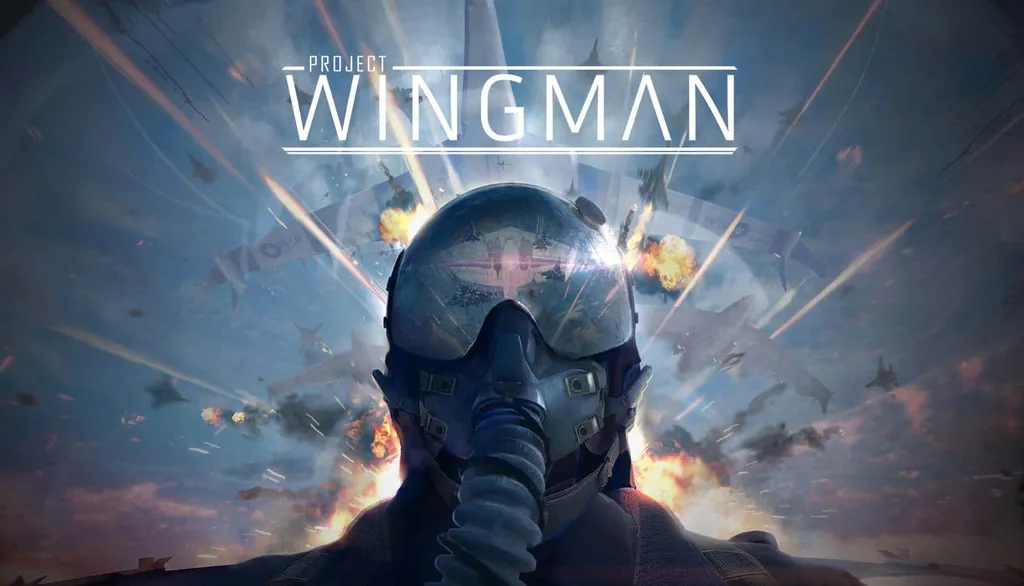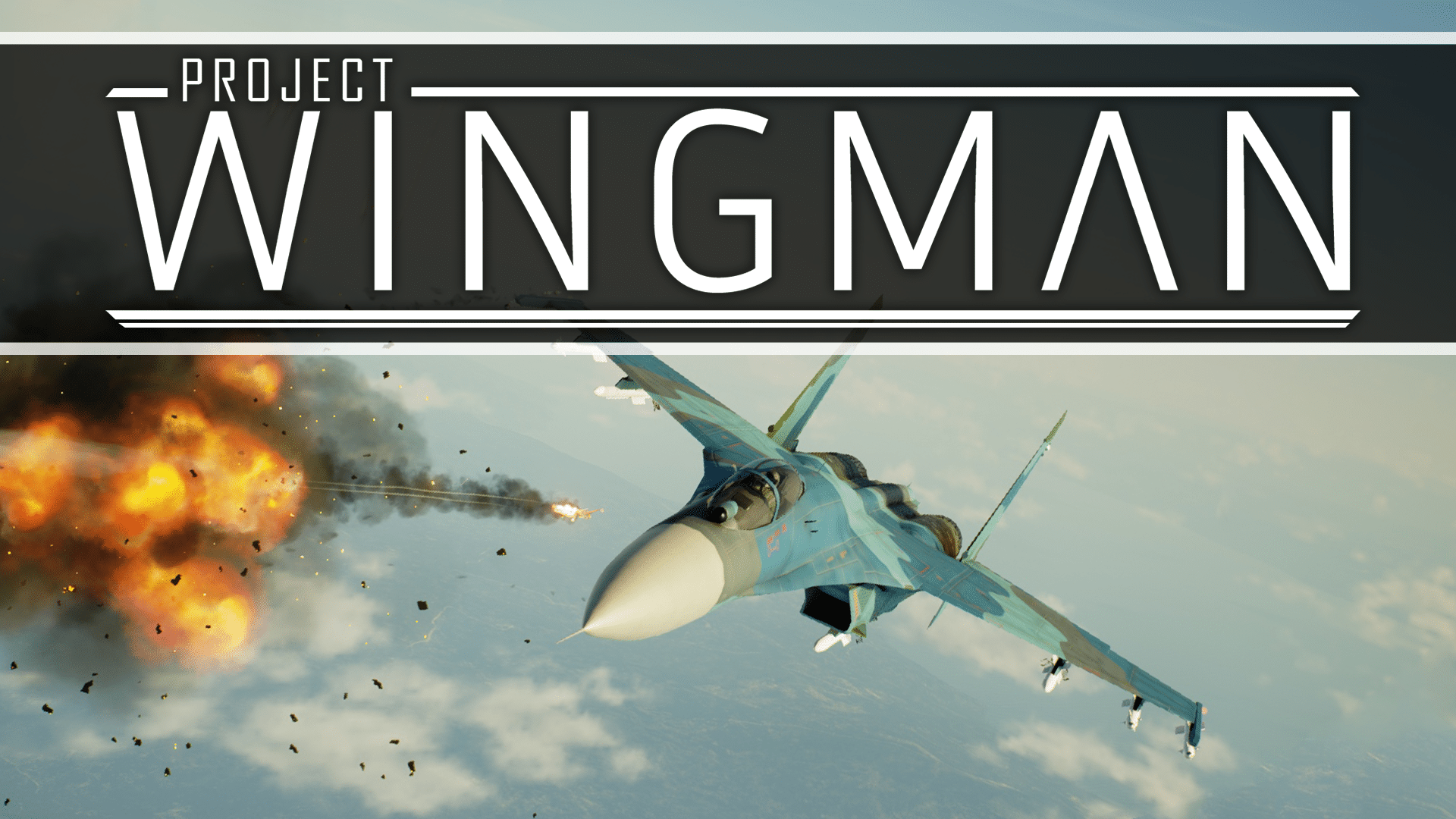Project Wingman is a love letter to the casual combat flight shooter genre Ace Combat popularized, bringing it to new heights. But does it deliver, and how’s the VR support? Read on for our full Project Wingman VR review.
Only three of Ace Combat 7’s missions were playable with PlayStation VR, leaving fans hoping for much more, and PC VR players with nothing.
[vc_row][vc_column][vc_cta h2=””]Project Wingman – The Facts
What is it?: Single-player mission-based aracde-style flight combat game with optional VR support.
Platforms: SteamVR (specifically Rift/Quest, Vive, and Index)
Release Date: December 1st
Price: $24.99[/vc_cta][/vc_column][/vc_row][vc_row][vc_column][vc_column_text]
Every mission in Project Wingman is playable on Oculus (PC) or SteamVR headsets. It supports gamepad well, but using a HOTAS in VR with this game is downright frustrating.
Like Ace Combat, Project Wingman is set on a parallel Earth destabilized so badly that private military organizations operate large fleets of jet fighters. There’s no need to have an understanding of fighter jets or flight dynamics- this is an action game, not a simulator.
Frustrating HOTAS Setup
The Steam page claims ‘full compatibility with HOTAS peripherals’, but none of the buttons & axis are pre-assigned.
I put on my headset, sat down in my flight chair, and strained to look at the word ‘[[Start]]’ flashing in yellow against a golden cloud. I pressed all the primary buttons on my flight stick and waited. Nothing. I tried mashing every button I could feel. Still nothing.

That’s because unlike almost every other VR game with HOTAS support, Project Wingman doesn’t have default HOTAS mappings. Worse, it doesn’t even attempt to communicate this. I initially found myself wondering if I’d forgotten the USB connection.
There’s no support for VR controllers either- not even for browsing the menu. That means unless you have a gamepad connected & ready you have to realize what’s going on, close the game, re-launch it in non-VR mode, and set your entire control scheme from scratch.
Even once you’ve done this, you can’t assign a HOTAS key to advance through menus between levels.
All of this is fine when you’re sitting beside your monitor, but not blindfolded in VR. The initial HOTAS experience was so frustrating I’d probably have just refunded it if I weren’t reviewing. What were they thinking?
Immersion & Gameplay
Once I finally got into the game I was impressed by just how much fun it is. There are 21 missions in Project Wingman that each take around 30 minutes to complete in most cases on your first run but can be replayed to do better and earn more points.
Like Ace Combat it keeps it simple: you take on a clearly marked enemy force which is followed by waves. Those enemies range from fighter jets, boats, railgun cannons, and even a gigantic flying fortress.
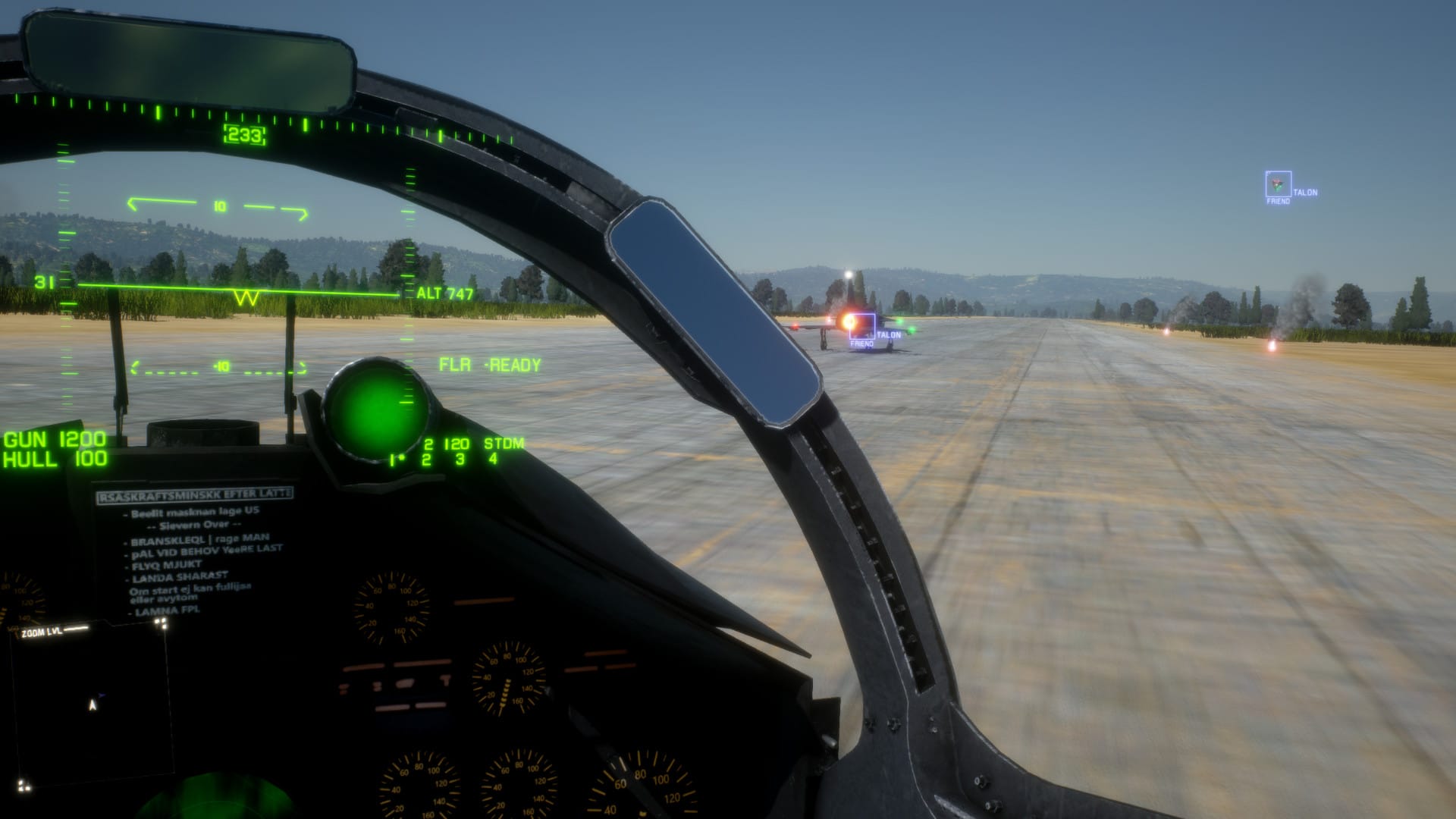
[vc_row][vc_column][vc_cta h2=””]Project Wingman VR Review – Comfort
Project Wingman is a cockpit-based flight combat game so, naturally, the entire game is spent inside of cockpits or looking at menus. Since your vision is grounded by a cockpit that surrounds you, naturally tunneling your vision a bit, that does help alleviate motion sickness for most people. Each plane also has a different cockpit style which could contribute some as well. That being said, these aircraft fly very fast and do lots of spinning, so it could still feel intense if you’re sensitive. There are no specific comfort options to tweak.[/vc_cta][/vc_column][/vc_row][vc_row][vc_column][vc_column_text]
You start with two 1960’s era aircraft to choose from, the US F-4 and the Soviet MiG-21. Each aircraft has a slightly modified name from reality, likely to avoid copyright issues, but the 3D models are fairly accurate.
Completing missions will earn you points that you can spend to unlock newer aircraft- by the end you’ll get access to the latest stealth fighters like the F-22 and Su-57- and even fictional future ones. There are more than 20 aircraft in total.
What impressed me most though is the range of weapons and how different they feel. Each plane has different loadout options you pick before a mission, so this keeps the gameplay fresh even when you’re taking on yet another wave of inbound fighters.
There are anti-ship missiles, anti-air missiles, and air-to-ground missiles. Some are IR seeking, others are semi-active, meaning you need to keep a lock on all the way to the target. There are a range of gunpods, some with plenty of low power ammunition and others with a few heavy hitting rounds.
Lining up unguided rockets and free-fall bombs is particularly satisfying. It’s clear Sector D2 spent a lot of time getting the feel of weapons just right- there are over 40 in total.
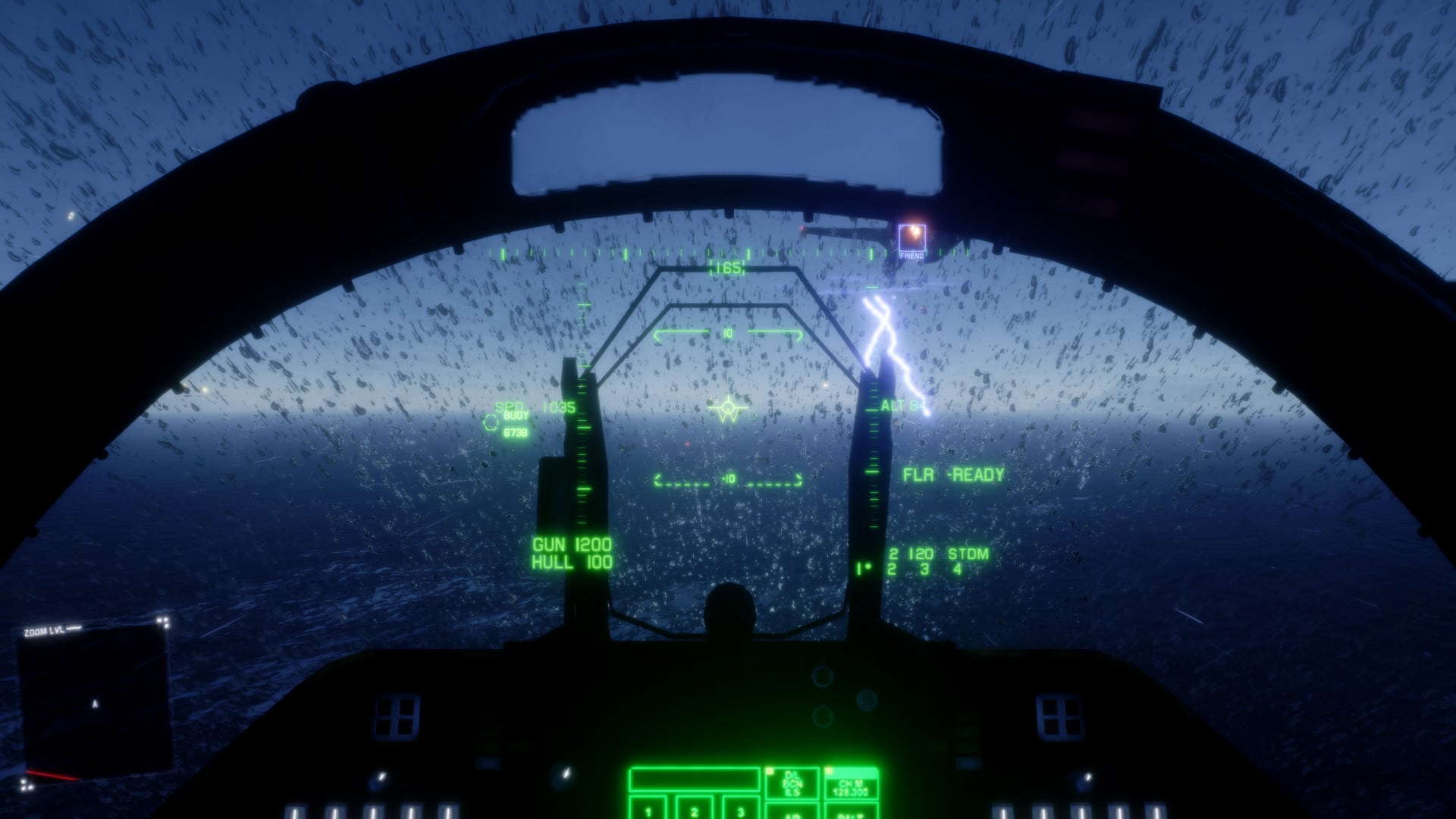
The overall visual aesthetic looks just fine, but some of the effects are actually very impressive even on Low settings. Missiles soar past and explode with fury. Raindrops streak along the sides of the cockpit.
The virtual sticks & throttles don’t move in the cockpits at all unfortunately, and as far as I can tell there’s no way to keep the aircraft HUD without the game HUD, such as Star Wars Squadrons allows.
Performance
Flight games are notoriously difficult to get running at full frame rate in VR. The combination of high detail cockpits and huge flyable environments can typically bring any PC to its knees.
I’m currently running an NVIDIA RTX 2070 with an Intel i5-9600K, paired with 32GB RAM. That’s driving a Quest 2 in Link mode at 90Hz, with the resolution set to default (1624×1648 per eye).
In VR there’s only one performance metric that matters: are you regularly dropping frames or not? Project Wingman makes the same mistake as many other VR titles in starting you with maxed out settings. That means your first experience, if you don’t take the time to tweak, will be a stuttering mess.
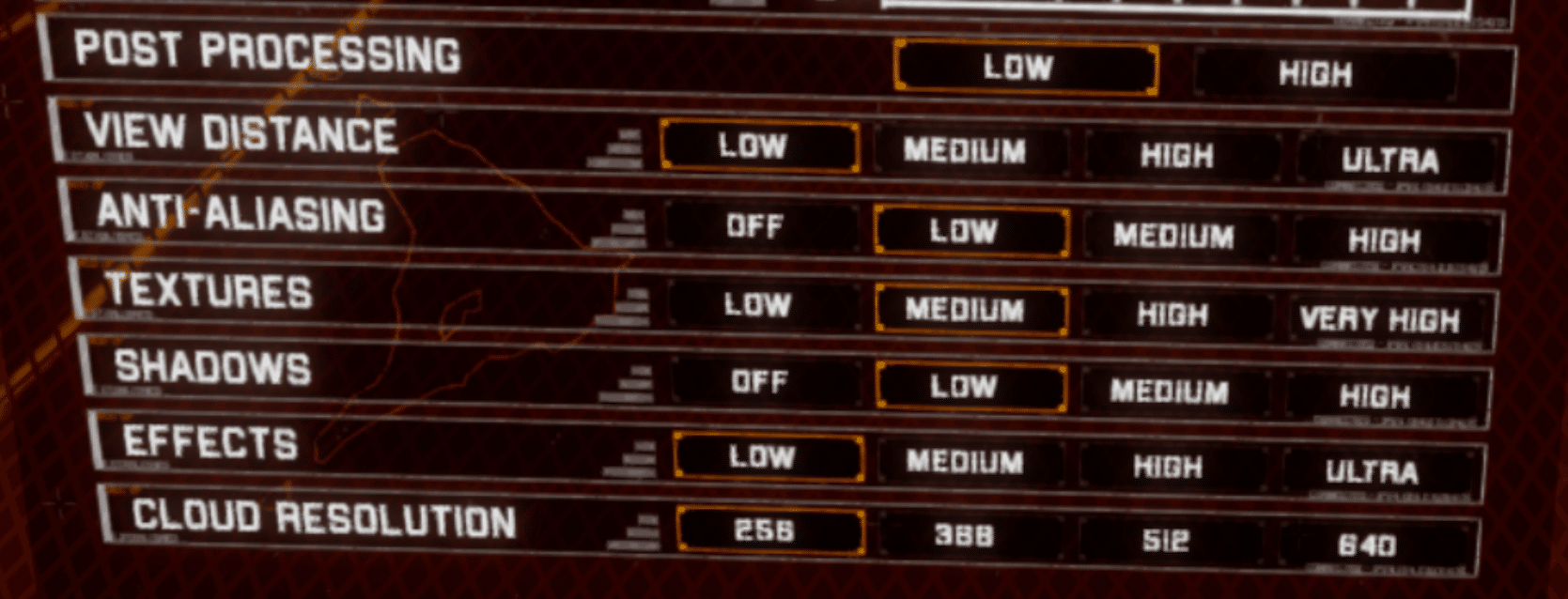
I had to turn down most settings to Low to get a solid 90 FPS. If you’re running a weaker card you’ll probably want to use 80Hz or 72Hz modes, if your headset supports that.
It’s also worth mentioning that, across the board, VR support seems like an afterthought here. Trying to capture screenshots, footage, or even use other programs on the PC resulted in a strange stuttering- even the Oculus Dash menu refused to respond. It’s possible this is a PC issue, but it doesn’t happen in any other VR title I play.
Project Wingman VR Review Final Verdict
Outside of VR, Project Wingman really is the Ace Combat spinoff fans have always dreamed of. If you just have a gamepad and want to feel like you’re in Top Gun without needing to learn aerodynamics, you’ll have a lot of fun. In VR it’s still playable with a gamepad, but that ruins the immersion for the most part. Project Wingman is still a good game, but the shaky VR support drags everything down significantly.
Alternatively, if you want to take direct control of an interactive cockpit in VR, I’d recommend VTOL VR instead. It’s a VR-only title with full support for tracked controllers, letting you directly interact without a HOTAS. While Project Wingman packs faster action, VTOL offers much deeper immersion.
If you do have a HOTAS and want to take advantage of it in VR, nothing comes close to Digital Combat Simulator- though be prepared to spend hours learning before you’re anywhere near action.


For more on how we arrive at our scores, check out our review guidelines.

Project Wingman is out now on Steam for $24.99 with SteamVR support for Oculus Rift, HTC Vive, and Valve Index. This review was conducted using an Oculus Quest 2 via Oculus Link connection.

